It has been almost two years since I last did one of these columns. I don’t plan on starting it up again as a regular thing, but there is so much interesting news and interesting new works being published, as well as some self-promotion, so I thought I would put it all together in a post.
This covers major news and releases since the AML Conference, held in May. Be sure to see our 2020 AML Awards and the YouTube videos of the conference panels, which discussed the best Mormon literature in the 19th, early 20th, late 20th, and 21st centuries. Also James Goldberg’s inspiring presidential address.
 Literature Podcast
Literature Podcast
Dialogue Book Report #11: Mormon Music and Novels
First I have a conversation with the music scholars Michael Hicks and Jake Johnson about their recent work on Mormon music and theater. Then a conversation with two book reviewers, Amanda Ray and Liz Busby, to talk about recent novels by Mormon authors.
Criticism and Scholarship
 Adam McClain edited a special symposium of scholarly articles in an SFRA Review, “Mormonism in SF”. Vol. 51, No. 3, Summer 2021.
Adam McClain edited a special symposium of scholarly articles in an SFRA Review, “Mormonism in SF”. Vol. 51, No. 3, Summer 2021.
A Critical Introduction to Latter-Day Saint Speculative Fiction • Adam McLain
Information Science in Latter-day Saint Theology • Carl Grafe
Gods and Monsters in Latter-day Saint Reconciliation Stories • Alan Manning and Nicole Amare
Re-visioning an American Angel: Mythopoesis in The Tales of Alvin Maker • Paul Williams
Soulful Theatre: Mormon Theology of the Body in the Science Fiction Plays of Orson Scott Card • Kristin Perkins
The Translation of a Mormon Alien in “That Leviathan, Whom Thou Hast Made”• Dale J. Pratt
The Most Mormon Magic System: How Brandon Sanderson Turned Agency into Fantasy • Liz Busby
Building on the Vision: Mormon “Humanism” in Battlestar Galactica (2004-2009) • James H. Thrall
“Mormons” in Leviathan Wakes: Applying the Church/Sect Typology • Rebekah Call
Sex, Attachment, and the Quest for a Universalist Ethic in Mormonism and Star Wars • Ian McLaughlin
‘Not Every God’: Theosis and The Hundred Thousand Kingdoms • Conor Hilton
Other recent scholarly articles:
Scott Hales. “Something Akin to Dissatisfaction: A Review of Book of Mormon Novels”. Journal of Book of Mormon Studies. 2021 (August 2021). “Scott Hales has summarized the long and fascinating history of novelized versions of the Book of Mormon. The phenomenon is older than one might expect, and there are exciting things to learn from the history Dr. Hales lays out.”
Kristin Perkins. “Queering Zion: Liberalism and Coalitional Care in Mormon Drama” Ecumenica: Performance and Religion, volume 12, issue 1. 2020. About the plays Confessions of a Mormon Boy (Steven Fales) and Good Standing (Matthew Greene).
Coming soon:
Michael Austin. Vardis Fisher: A Mormon Novelist. University of Illinois Press, Nov. Introductions to Mormon Thought series.
Jacob Bender. ““I Cannot Describe Salt”: Elizabeth Willis, Poets in Exile, and the Church Invisible in the Age of Pandemic” Dialogue, Fall 2021.
Terryl Givens. Stretching the Heavens: The life of Eugene England and the Crisis of Modern Mormonism. University of North Carolina Press, Aug.
Kristen L. Haglund. Eugene England: A Mormon Liberal. University of Illinois Press, November. Introduction to Mormon Thought series.
News
Brett Cain, who has had thriller novels published with Covenant in 2019 and 2020, said on Twitter July 29: “Deseret Book cut me and is taking my novels out of print.” Cain frequently comments on Twitter using the #DezNat hashtag.
New Books
Novels
Orson Scott Card. Duplex. Blackstone Publishing, Sept. 7. “A Micropowers novel”. Ryan wakes up to find his contractor dad building walls to turn their big old house into a duplex. The family that moves into the other side includes Bizzy Horvat, the pretty girl he has a crush on at school. Bizzy claims her mother is a witch with the power to curse people with clumsiness or, in Bizzy’s case, astonishing beauty. When a bee gets caught in Bizzy’s hair, Ryan acts so quickly and radically to save her from getting stung that he attracts the attention of a group of micropotents — people with micropowers. He soon realizes that Bizzy and her mother also have such powers. It becomes Ryan’s job, with the help of the other micropotents, to protect the Horvats from a group of witch hunters from their native country, who are determined to kill Bizzy, her mother, and all the other “witches” — micropotents — who have gathered to protect them.
Ann Dee Ellis and Robert Kimmel Smith. The War with Grandma. Delacorte Books for Young Readers, July. Sequel to The War with Grandpa (1984), which was made into a movie in 2020, with Robert De Niro, Uma Thurman, Christopher Walken, Jane Seymour, Rob Riggle, Cheech Marin.
Rosalyn Eves. Beyond the Mapped Stars. Knopf, August. YA historical fiction. 19th century Mormon girl unwittingly becomes involved in a railway heist, and— if she can’t return the stolen device to its rightful owner before the 1878 total solar eclipse— might lose not only her own life, but might alter the future of American science and magic.
PW: Seventeen-year-old Elizabeth Bertelsen, who is white and Mormon in 1878 Utah, is expected to marry and start a family like her polygamous father’s brood. But though she loves her church, she’s more interested in getting an education and studying the stars. It’s not impossible—Elizabeth’s scientific hero is astronomer Maria Mitchell—but it does seem unlikely. When her inattention endangers a sibling, Elizabeth is sent to Wyoming to care for her pregnant half sister. From there, she’s only a train ride to Denver and Pikes Peak, where the country’s greatest astronomers, including Mitchell, will view an upcoming eclipse. Elizabeth draws on her gumption, heads to Denver, and, helped by new friends and old, tries to become part of the expedition that will track the eclipse. She must also determine whether faith and science are compatible, and as she and other characters face religious prejudice, sexism, racism, and their own self-doubt, Eves’s well-crafted tale of perseverance will have many contemporary readers identifying with them.
James Goldberg and Janci Patterson. The Bollywood Lover’s Club. Garden Ninja Books, July. “Amrita Sidhu belongs: in her Indian extended family, in her Sikh faith, in her California home. But when a family fight makes up her father’s mind to take a job across the country in Ohio, she’s torn from the fabric of her community and left to find her footing in a new high school and a new life. In Ohio, Amrita meets Dave Gill, who’s funny, part-Indian, and also Mormon. At a series of Bollywood movie nights with friends, they begin to connect—despite the pressure they both feel not to date outside their own faith. As Amrita stares down diverging paths for her future, she knows only one thing for certain: she can’t hold on to everything. She’ll have to choose between her relationship with Dave, her family’s good opinion of her, and her place in her own community—And once she makes the decision, there will be no going back.”
Mette Harrison. The Prodigal Daughter. Soho Crime, May. Linda Wallheim mystery.
PW (starred review): Harrison’s heart-wrenching fifth Linda Wallheim mystery (after 2018’s Not of This Fold) finds Linda, the wife of an LDS bishop in Draper, Utah, drawn into the role of amateur investigator by the oldest of her five grown sons, Joseph, who teaches Sunday School in nearby Ogden. Sabrina Jensen, a 15-year-old who regularly babysits for Joseph and his wife, has disappeared, but her parents appear unconcerned about her whereabouts. Linda, a self-described busybody who can’t resist helping anyone in need, throws herself into searching for Sabrina, who she eventually learns was the victim of a terrible crime committed by “good Mormon boys.” Linda winds up trekking the meaner streets of Salt Lake City in her effort to save Sabrina. Meanwhile, she struggles with the strictures of the Church of Jesus Christ of Latter-day Saints and her fraught relationship with her husband, with whom she’s in marriage therapy. Harrison adroitly raises various ethical issues as the suspenseful plot builds to a devastating climax. Those looking for a nuanced character study will be rewarded.
Ginger Johnson. The Other Side of Luck. Bloomsbury Children’s Books, July. MG fantasy/adventure. Second novel. Ever since her mother’s death, Princess Una has suffered through years of loneliness in the royal palace, where girls are treated as an afterthought. She yearns for a different life but is unsure how to make anyone notice her. Then her father announces a special contest: Whoever finds the rare Silva Flower can present it to Una for her twelfth birthday and receive a reward.
Marcia Mickelson. Where I Belong. Carolrhoda Lab, Sept. 7. YA. Author from Guatemala. “In the spring of 2018, Guatemalan American high school senior Milagros “Millie” Vargas knows her life is about to change. She’s lived in Corpus Christi, Texas, ever since her parents sought asylum there when she was a baby. Now a citizen, Millie devotes herself to school and caring for her younger siblings while her mom works as a housekeeper for the wealthy Wheeler family. With college on the horizon, Millie is torn between attending her dream school and staying close to home, where she knows she’s needed. She’s disturbed by what’s happening to asylum-seekers at the U.S.-Mexico border.”
Bryce Moore. The Perfect Place to Die. Sourcebooks Fire/Edelweiss, Aug. YA historical mystery/thriller. Based on the 1890s H.H. Holmes murders, which were told in the popular book The Devil in the White City.
Luisa Perkins. Summersong. Self, July. Kindle Vella platform. Contemporary fantasy, retelling of The Magic Flute. “Tom would love to focus on his music, but instead must use his psychic abilities to pay off his father’s gambling debts. When a rich recluse says she’ll repay his boss if he hunts down her runaway daughter, Tom seizes his chance at freedom. Una is sick of being her mother’s magical battery pack. But after escaping, she’s caught by the abusive man she’s betrothed to. Vowing never to be a slave again, Una reluctantly accepts the help of Tom, the man hired to return her to her mother’s posh prison.”
Brandon Sanderson and Stephen Michael Bohls. Lux. Audible, July. A Texas Reckoners novel. YA fantasy, from the evil superhero Reckoners series.
Short Fiction Collections
Josh Allen. Only if you Dare: 13 stories of darkness and doom. Holiday House Books, Aug. Middle grade scary short stories.
SLJ (Starred): “Allen has cemented himself as the heir-apparent of Alvin Schwartz; this is the new quick pick for patrons who want more after reading all the classic ‘Scary Stories to Tell in the Dark.’. . .A chilling anthology of memorable scares that will leave even the biggest horror buffs sleeping with the light on.”
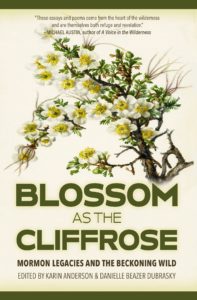 Karin Anderson and Danielle Dubrasky, editors. Blossom as the Cliffrose: Mormon Legacies and the Beckoning Wild. Torrey House Press. June. Poetry, short fiction and essays. Features original poems and prose by talented writers who are faithful, non-faithful, believers, heretics, converts and de-converts, dragged in or forced out of the Mormon faith. This dynamic collection demonstrates the breadth, complexity, and diversity of a Latter-day Saint legacy of commitment to natural place and challenges us to examine the myriad ways our own deeply rooted heritage shapes our personal relationship with landscape. Among the authors are Tracy M. Atsitty, Phyllis Barber, Darlene Young, Matthew Babcock, Jack Harrell, Dayna Patterson, Kathryn Knight Sonntag, Kimberly Johnson, George B. Handley, John Bennion, Laura Stott, Dayna Patterson, Lance Larsen, Twila Newey, Tyler Chadwick, Julie Nichols, and Theric Jepson.
Karin Anderson and Danielle Dubrasky, editors. Blossom as the Cliffrose: Mormon Legacies and the Beckoning Wild. Torrey House Press. June. Poetry, short fiction and essays. Features original poems and prose by talented writers who are faithful, non-faithful, believers, heretics, converts and de-converts, dragged in or forced out of the Mormon faith. This dynamic collection demonstrates the breadth, complexity, and diversity of a Latter-day Saint legacy of commitment to natural place and challenges us to examine the myriad ways our own deeply rooted heritage shapes our personal relationship with landscape. Among the authors are Tracy M. Atsitty, Phyllis Barber, Darlene Young, Matthew Babcock, Jack Harrell, Dayna Patterson, Kathryn Knight Sonntag, Kimberly Johnson, George B. Handley, John Bennion, Laura Stott, Dayna Patterson, Lance Larsen, Twila Newey, Tyler Chadwick, Julie Nichols, and Theric Jepson.
D. J. Butler. The Florilegium of Madness. Hemelein, July. Collection of short fiction, including 6 Hiram Woolley short stories. Also other stories that explore dark and somber themes, including two tales set in the Cthulhu Mythos; the weaving together of ancient Egypt, 1930s Massachussetts, and a future spaceship across time and space; a traveler in the Old West comes to an elaborately bad end.
Renae Weight Mackley, Janice Sperry, Rebecca H. Janson, and Melissa J. Cunningham. Coming Home: A Returned Missionary Anthology. Parables, June. Romance novellas. Several characters reappear in the other novellas, making the collection uniquely intertwined. The novellas are best read in order. Each novella is it’s own story with a feel-good, romantic ending, and all are tied together neatly in the epilogue. The stories are entertaining, though it may be helpful to know that there are some mature themes, particularly in the second novella. The issue of pornography and the struggle to remain morally chaste is tastefully addressed, representing a heart-breaking reality within a religious value system.These stories will give you something to think about, and perhaps compare, along with eliciting that sweet, romantic sigh. Jennie Hansen: “Each novella is the story of a different returned missionary and his or her adjustment to being home, re-entering the dating scene, and the differences between their new reality and their previous expectations, Romances with a different twist. Each novella in this series stands alone, but secondary characters in one story become major characters in another story.”
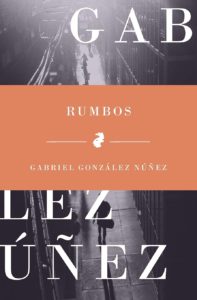 Gabriel Gonzalez Nunez. Rumbos. Jade Publishing, June. Short fiction in Spanish.
Gabriel Gonzalez Nunez. Rumbos. Jade Publishing, June. Short fiction in Spanish.
Levi S. Peterson. Losing a Bit of Eden. Signature, May. Short fiction, mostly previously published in Dialogue or Sunstone.
Poetry
Sunni Brown Wilkinson. The Ache and The Wing. Sundress Publications, June. Poetry chapbook. Won Sundress’s ninth annual chapbook competition.
Creative Nonfiction
Alison Hong Merrill. Ninety-Nine Fire Hoops. She Writes Press, September. Memoir. Nineteen-year-old Taiwanese Mormon girl, Allison Hong meets twenty-year-old rebellious American Mormon missionary, Cameron Chastain, in Taipei and elopes with him to his hometown in Texas when she is twenty-two. Sixteen months into their marriage, one day Allison goes home to their apartment and discovers that during her two-hour absence Cameron has moved everything out, cut off all services, withdrawn all the money in their bank account, and served her divorce papers. From a powerless, abandoned immigrant bride to a confident woman in command of her own destiny, 99 Fire Hoops tells the story of how Allison’s choice to break the Chinese cultural expectation for women to submit to men’s will allows her to create her own destiny.
Kirkus: “The reader can’t help but hang onto her every word as Merrill explores issues of faith, trauma, mental illness, immigration, and relationships. It’s a strange story to be sure—one perhaps more in keeping with Buddhism’s tenet that “life is a sea of suffering” than the Latter-day Saints’ teachings of God’s infinite love—but a captivating one. A surprising but compelling memoir of resilience and family.”
Comics and Graphic novels
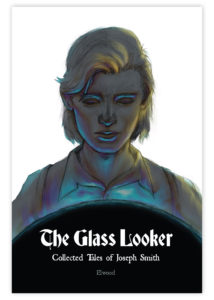 Mark Elwood. The Glass Looker, Vol. 1. Sept. 150 full color pages. Myths and legends of Joseph Smith’s youth. Based on Dan Vogel’s scholarship. “In this first installment of Joseph’s journey learn about the local folklore that inspired American treasure digging culture and meet the early influences in young Joseph’s life, as illustrated directly from historical sources.”
Mark Elwood. The Glass Looker, Vol. 1. Sept. 150 full color pages. Myths and legends of Joseph Smith’s youth. Based on Dan Vogel’s scholarship. “In this first installment of Joseph’s journey learn about the local folklore that inspired American treasure digging culture and meet the early influences in young Joseph’s life, as illustrated directly from historical sources.”
Shannon Hale, LeYuen Pham. Forever Friends. August. Middle grade graphic novel. Third in the AML Award winning “Real Friends” series.
Matt Page. Future-Day Saints 2: The Gnolaumite Crystal. August. Comic and activity book. Sequel to the AML Award-winning Future Day Saints: Welcome to the New Zion. See reviews here and here.
Theater
1820: The Musical. George Nelson (book), Kayliann Lowe Juarez, Doug Lowe, Kendra Lowe (music and lyrics). Covey Center for the Arts, Provo. Aug. 6 through Sept. 11. Musical about Joseph and Emma Smith, told through the eyes of Emma. Featuring contemporary music and dancing. The musical was set to open in May 2020 at BYU, but it was cancelled by COVID.
Film
His Name is Green Flake. June. Available On-demand, July. Mauli Bonner,
director/writer. Stars Yahosh Bonner. “Inspired by the true story of enslaved pioneer and Latter-day Saint Green Flake. His courageous cross-country journey to prepare the way for the Saints was integral to the “Mormon Migration” and the settlement of Utah.”
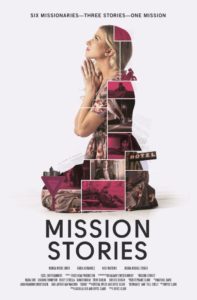 Mission Stories. May. Bryce Clark, director/writer. Anthology of 3 stories about LDS missions. Introduction to a web series. Director is an alcholic, wrote the film when he was in recovery. Frost Road Entertainment in partnership with Excel Entertainment and Purdie Distribution. Intended to be the start of a series on an upcoming Deseret Book streaming service. Arthur VanWagenen executive producer.
Mission Stories. May. Bryce Clark, director/writer. Anthology of 3 stories about LDS missions. Introduction to a web series. Director is an alcholic, wrote the film when he was in recovery. Frost Road Entertainment in partnership with Excel Entertainment and Purdie Distribution. Intended to be the start of a series on an upcoming Deseret Book streaming service. Arthur VanWagenen executive producer.
Sean Means: 2.5 stars. “The episodes vary greatly in quality and focus. The story that starts and ends the film, “Full Circle,” begins with a missionary, Darren,meeting with one guy, Bruce, and ending up converting Bruce’s beer-drinking buddy, Mike. Time passes, and Mike is trying to help Darren, who has fallen away from the faith and become a drug addict. In the second story, “Chuck,” two sister missionaries — one who’s shy and devout, and another who is a spoiled young woman more concerned with her boyfriend back home than the job at hand — put aside their differences to help a biker, who works to give up his vices to join the faith. In the third story, “Hermanos,” a missionary is given an assignment with a Spanish-speaking mission — even though his Spanish skills are spotty. The stories fall into familiar patterns. Each story includes, at some point, a convert being baptized. And each is very clear that the act of performing a mission is, despite hardships and setbacks, a generally positive experience. The best of the three is “Chuck,” which focuses on the human side of missionary work, and the personality friction between young people assigned to work and live together for months on end. “Full Circle” has its overwrought moments, and gets pretty dark, but is largely heartfelt. “Hermanos” feels underdeveloped, and a reminder that miracles make for good sermons but weak screenwriting. There’s no doubt that “Mission Stories” is a movie for the faithful, not the skeptical. Viewers who don’t adhere to the Latter-day Saint faith, or have been members of the church but left with no intention to return, can find their entertainment somewhere else. Those who do believe will find some inspiration.
 Once I Was Engaged. McLain Nelson, director/writer. July, 2021. Sequel to Once I Was a Beehive.
Once I Was Engaged. McLain Nelson, director/writer. July, 2021. Sequel to Once I Was a Beehive.
Sean Means: 3 stars. “The 2015 movie “Once I Was a Beehive” holds the distinction of being one of the few Latter-day Saint-themed movies that was as much about telling a good story as it was about promoting the faith — and it’s a credit to writer-director Maclain Nelson that he can maintain a similar balance in the new sequel, “Once I Was Engaged.”. . . Nelson treads familiar territory here as he concocts a light-hearted variation of “Father of the Bride” or “My Big Fat Greek Wedding” with a dusting of Latter-day Saint culture . . . There are several unforced moments of humor, and most of them — like the scene where mother and daughter romp through a Target with scanner guns for Bree’s bridal registry — capitalize on Clark’s sharp comedic skills and Niederpruem’s bubbly charm.”
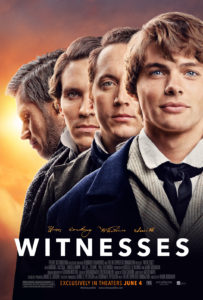 Witnesses. June. Mark Goodman, director. Mitch Davis, writer. Interpreter Foundation. Purdie distribution. Story of the 3 Witnesses to the Book of Mormon.
Witnesses. June. Mark Goodman, director. Mitch Davis, writer. Interpreter Foundation. Purdie distribution. Story of the 3 Witnesses to the Book of Mormon.
Sean Means: 2.5 stars. “As is customary with movies that cover the history and doctrine of The Church of Jesus Christ of Latter-day Saints, the drama “Witnesses” will have different meaning and impact depending on whether the viewer is a believer in the faith. For members, there’s nothing new in the movie’s overview of the church’s early history. They will nod with recognition at the steps of Joseph Smith’s journey — receiving the golden plates on which were written The Book of Mormon, working to translate the ancient language on those plates, and how he and his flock were persecuted across New York and the Midwest. Non-members will likely get stuck on how director Mark Goodman shows details of that history that, from an outside perspective, seem a little ludicrous . . . It’s in the stories of these men where “Witnesses” gets interesting, as Goodman and Davis depict the struggles and sacrifices the men made because they stuck to their accounts. They faced ridicule, angry mobs, death threats and — when they openly disagreed with Smith during the church’s early days — excommunication. The fact that they continued to trust in their faith, and their founder, is both spiritually inspirational and dramatically compelling.”

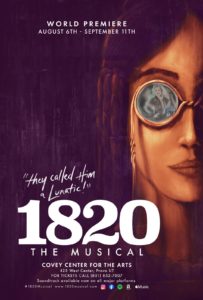
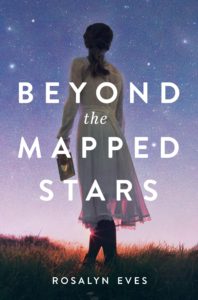
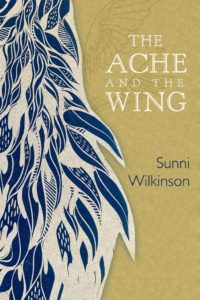
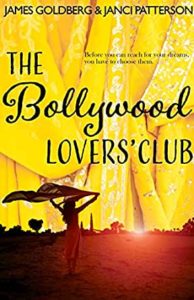
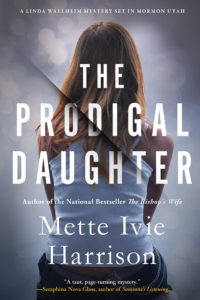
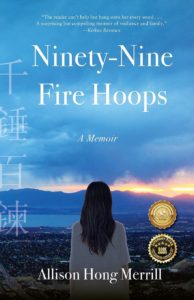
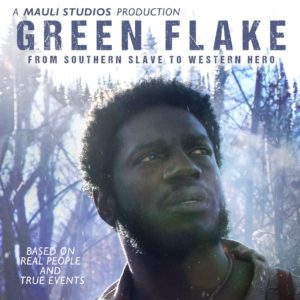
.
I hadn’t realized how much I’ve missed these. How did Scott publish something on Book of Mormon novels without me realizing it? Plus all the other things I either hadn’t heard of or want to remember.
No pressure or anything, just an elaborate thank you.
This has been a cool summer!
It’s sad to me that people like Gene England, Cracroft at all were paying more attention at a time when less was happening and now that more is happening, there’s less critical summary and attention. Thank you for gathering this kind of material together when you can.
What an exciting list! Thank you. thank you for this roundup of glories … and especially to the artists. I can’t wait to start reading and watching!